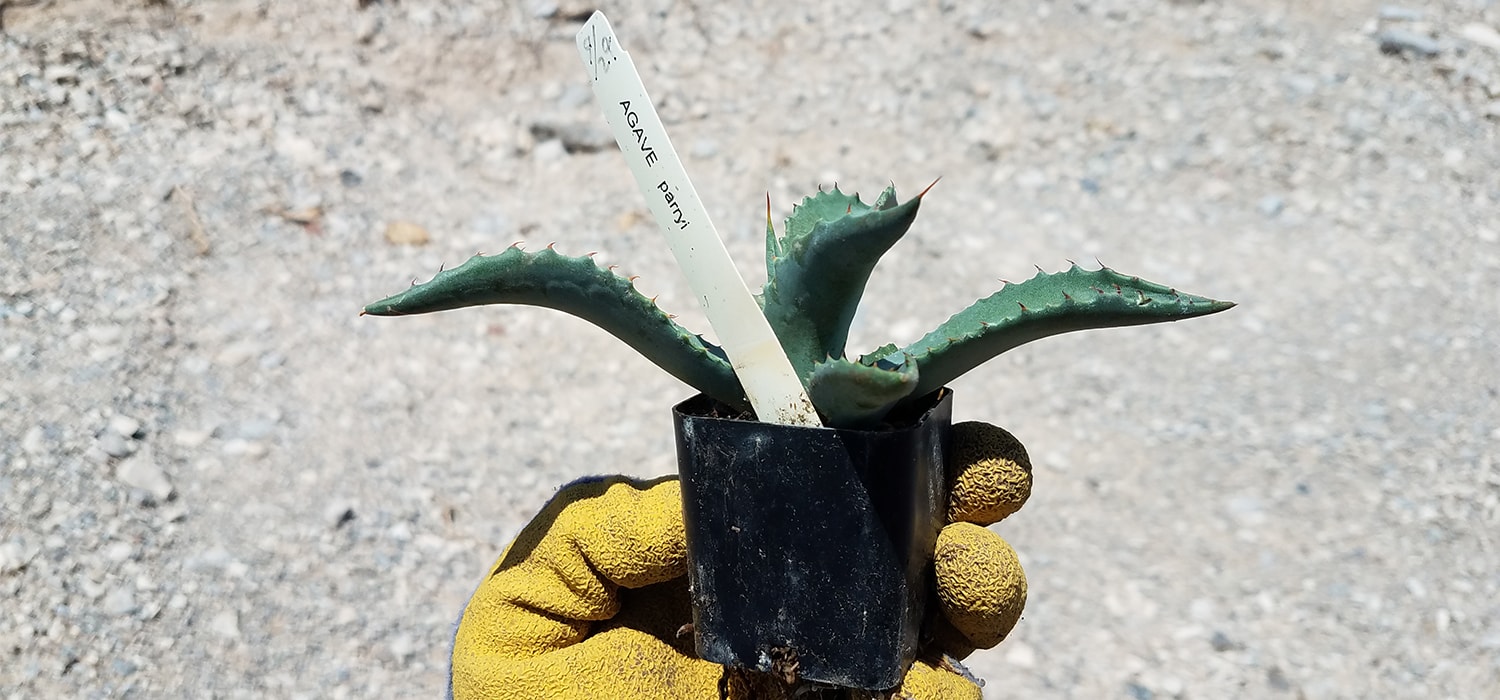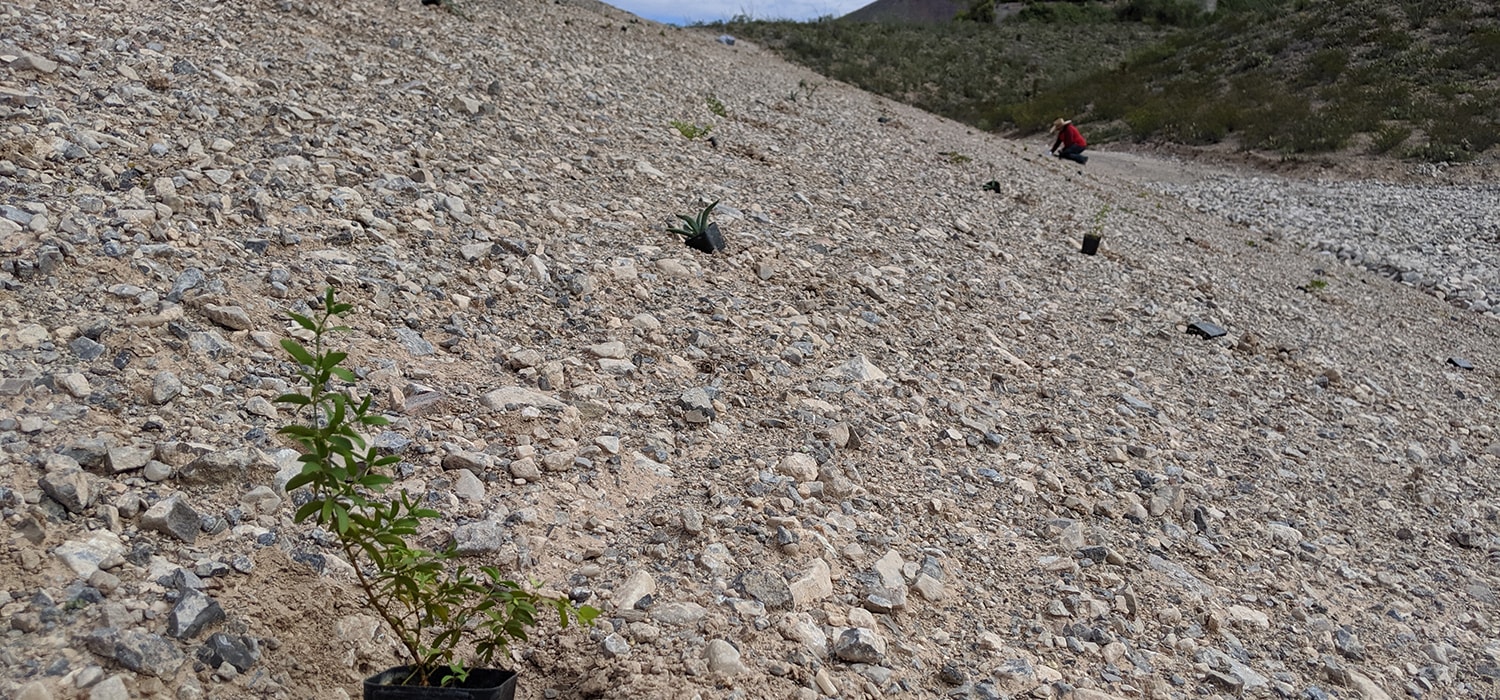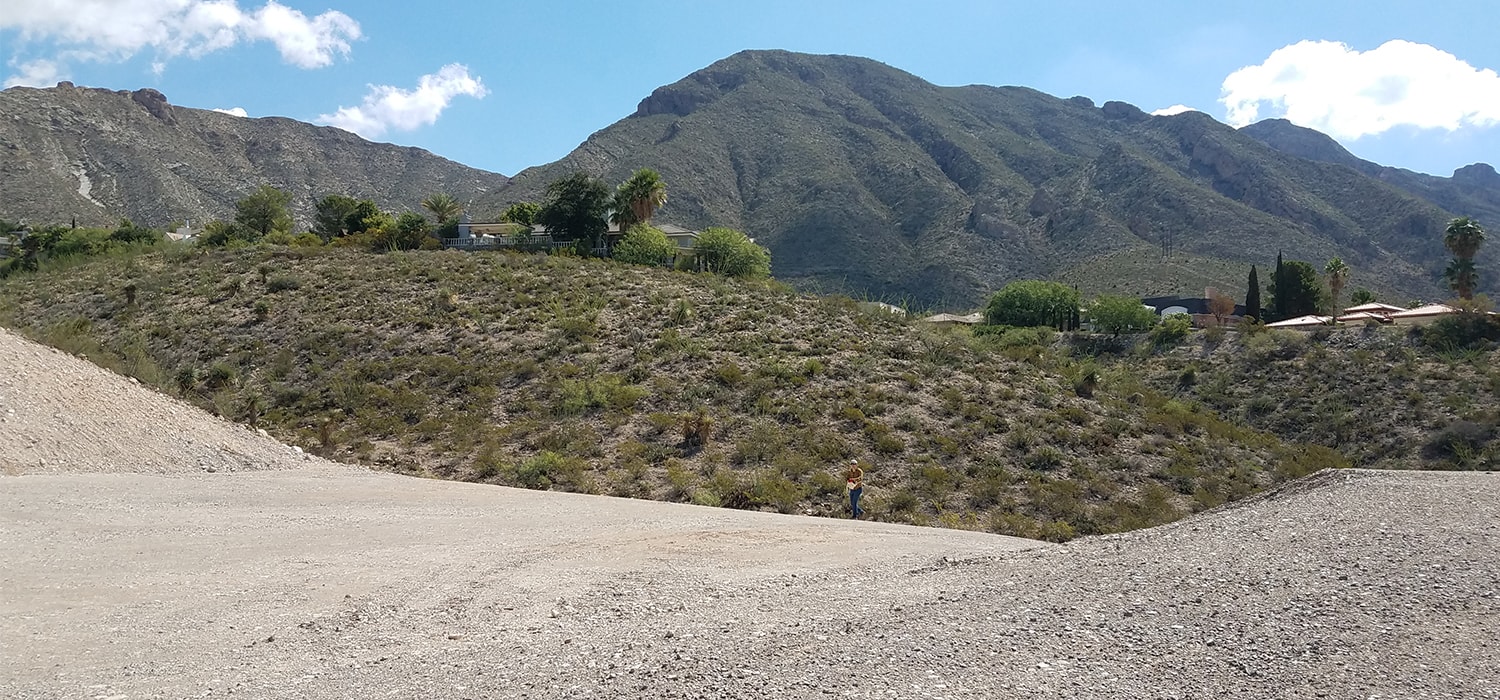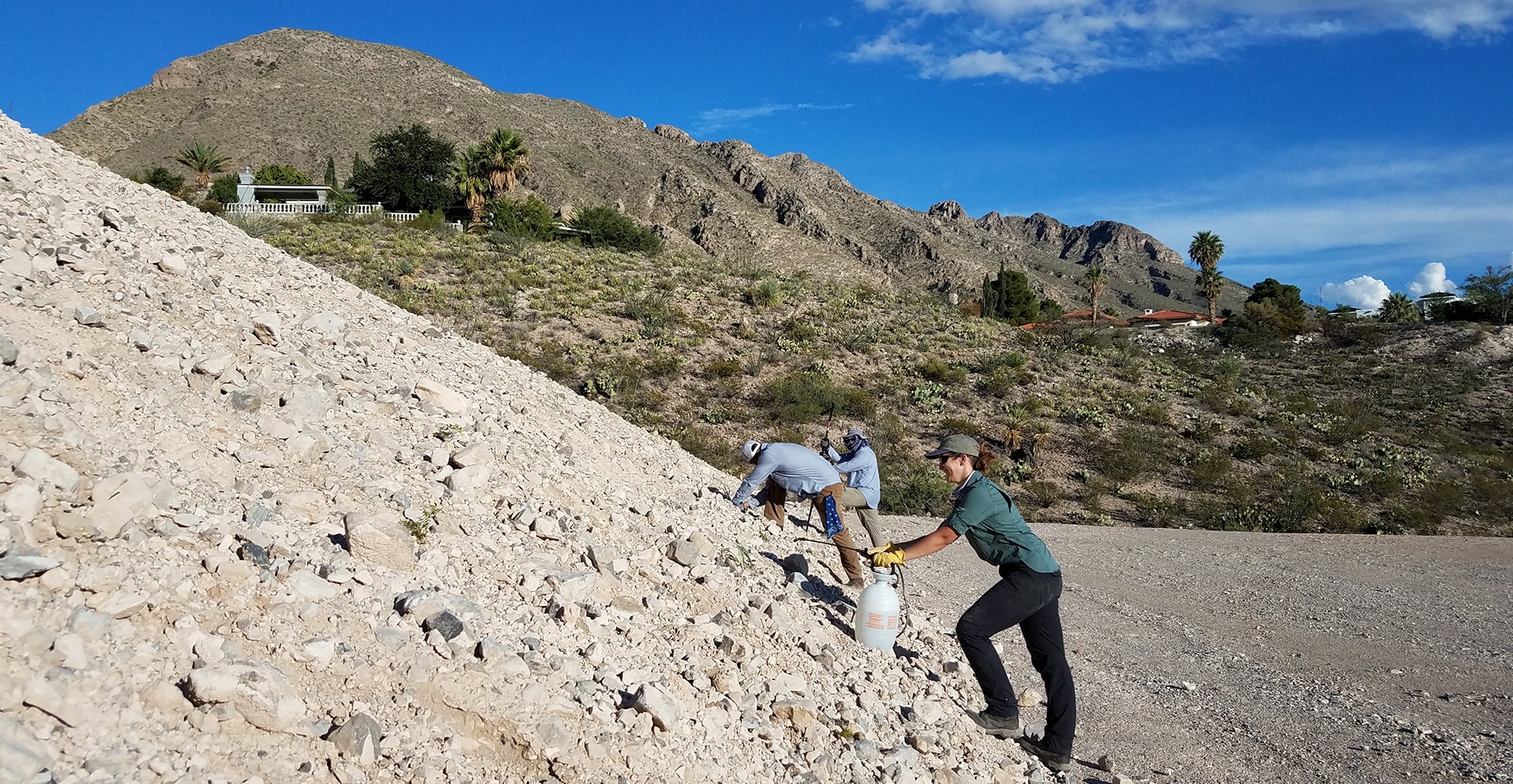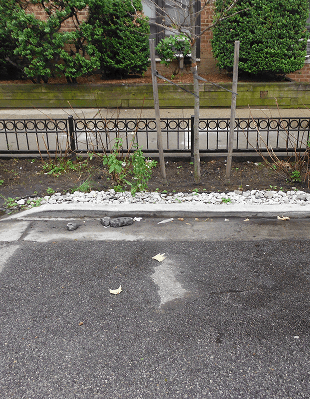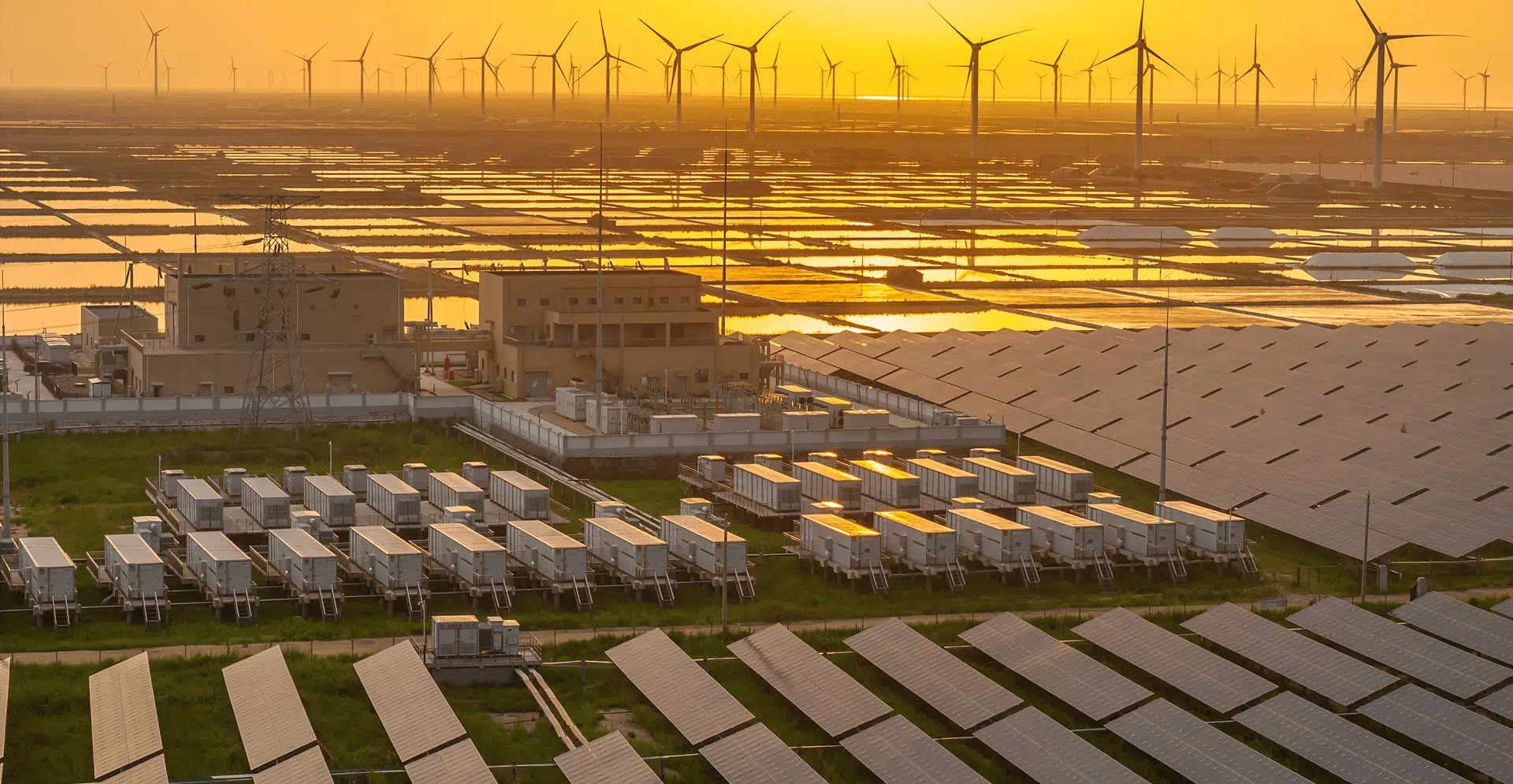Table of Contents
The challenge
El Paso Water’s Silver Springs Arroyo Dam was critical to managing flood risk, but construction had reduced the level of natural flora in the area.
9,000+
Addressing environmental impacts of new construction
As El Paso Water (EPWater) built the Silver Springs Arroyo Dam, maintaining the balance of the ecosystem became a unique challenge. Protecting people from floods was paramount, but there were public concerns regarding the loss of natural flora during construction as well.
The solution
El Paso Water partnered with Arcadis’ ecologists and engineers to develop a data-driven restoration plan that would ensure long-term health in a high desert environment.
5
Restoring flora in a unique desert landscape
Arcadis’ ecologists and engineers collaborated to tailor a plan fit for the Chihuahuan Desert environment. Soil cover there is different than soil in other areas of the country. It is typically thinner, less nutrient-rich and has biocrust – layers of bacteria, microbes and fungi that support healthy plant life. When that soil is disrupted, it becomes virtually sterile and it can take years to fully support plant growth again. Ensuring long-term restoration meant carefully selecting what to plant and where.
The team scanned the five-acre area with drone-mounted cameras and sensors. With insights into the climate, soil quality and the vegetation that would be most likely to thrive in the region, rejuvenation plans took off. Over the course of two weeks during rainy season, the team seeded and planted more than 5,000 of the Chihuahuan Desert’s heartiest plants.
To help EPWater understand and communicate progress to locals, our experts hosted a deep dive presentation on the technical solutions being used to overcome the challenges of desert ecology. When public questions persisted, the project team invited residents to a planting event. Attendees received an up-close look at how the plan will overcome unique high desert conditions to provide slow and steady growth.
“These plants are not just an aesthetic addition. They provide a habitat for native wildlife, help stabilize the soil, prevent erosion during rain events and help prevent invasive species from taking root. Desert environments can be a real challenge, but it’s exciting to start seeing the environmental benefits come to life,” said Jeremy Henson, Arcadis’ lead ecologist on the project.

The impact
9,000+ native plant species were sourced, seeded, planted and monitored, replenishing essential natural assets and beautifying the desert landscape.
Sustaining long-term growth
Another planting is scheduled for 2021, and the key to a successful restoration will be protecting the health of the plants and soil long-term. Arcadis’ ecologists use drone-mounted sensors to analyze the health and stress levels of vegetation without disrupting recovering areas. Their insights allow them to maintain progress and replant flora that did not take to the soil.
“Going the extra mile with El Paso Water on their first-ever restoration project was rewarding, not just because of the challenge at hand, but because of how the team came together from so many different specialty areas to deliver results that will literally continue to grow over time,” said Joel Mora, Arcadis project manager. Looking ahead, EPWater is also considering ways to maximize public benefits, like turning the restored arroyo into a trail-park that locals can enjoy.
The success is inspiring EPWater to turn the restoration from a siloed effort to a pilot for future projects. Environmental restoration will become integral to the process, with the utility mapping out restoration plans before ever breaking ground on construction.
Behind the solution
Not done reading?
This also might be interesting for you
- Related Projects
- Related Insights
- Related Blogs


